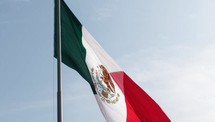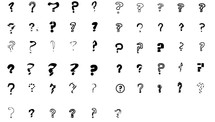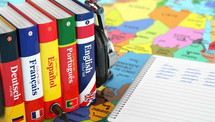How Many Different Languages Are Spoken in China
Ever wondered how many different languages are spoken in China? This country is big, and there are many dialects that people speak. China is one of the largest states in Asia, so there are many geographical features, provinces, customs, and languages. China accounts for 18.41% of world population, which is almost ¼ of Earth! There are both indigenous and official dialects, some of them are main and others are less popular.
Chinese Languages & Dialects: 7 Facts You Didn’t Know
Do you think you know a lot about China? Can you guess what are the top 3 languages spoken in China? Read the answers below!
Fact 1: 300+ languages in China
You might not know this, but China has many various dialects! There are 302 individual languages and 276 of them are indigenous.
Fact 2: Dialects
In China, languages are called “dialects” due to political reasons. But they are different tongues, where vocabulary, pronunciation, and grammar may vary.
Fact 3: Language family
Chinese belongs to Sino-Tibetian languages family, which currently is the largest in the world. More than 1.3 billion people speak it in China and globally.
Fact 4: Main Dialect
Mandarin Chinese is the most popular of all. But it’s so different from other dialects that its speakers cannot understand other dialects! For example, Cantonese dialect is so different that Mandarin speakers won’t understand it unless they learn it. So, Mandarin speakers use Cantonese companies to translate legal documents to their dialect. Also, Mandarin has been an official language of this country since 1930.
Fact 5: Groups of Languages
Linguists say that there are 10 different groups of Chinese language. There are more, but these 10 are main. Mandarin is the largest, and it has several sub-dialects.
Fact 6: Smallest Group
We know that Mandarin is the most common dialect in China. But what is the least popular? There exists one dialect of Cantonese that only has two million speakers.
Fact 7: Many Tones
Chinese has so-called tones. They can show meaning and influence it a lot. It can be a rising, level, high rising, falling tone. Translation companies and best video game localization services always consider tones when they localize for Chinese audiences. You can pronounce the same word with different tones and radically change its meaning. Due to this feature, you can compose a sentence full of the same words or syllables that will make sense.
Why are there so many Chinese languages?
People who start to be interested in China often wonder why there are so many languages. Answer is connected with politics and geography. Why do the USA, Russia, or Canada have one or two main languages, while China has so many?
Geographically, China had isolated provinces. This country has mountainous parts and different climate zones. Some of these parts aren’t easily reachable. Some provinces are of a size equal to some European countries. Each had a different culture, lifestyle, level of wealth, and language. So, now, to visit a doctor in another province, you often have to use best medical translation services for your hospital records. They didn’t often communicate, so lingos developed in different ways. That's why they might vary so much.
Politically, China hasn"t always been one nation. There were different tribes and groups of people who settled over the whole country and preserved their differences. Their language was already a bit different. In isolated provinces, it became even more diverse. China contained small countries with its own culture. They were later assimilated, but most of these provinces kept to their customs, which explains differences in dialects.
How Many Dialects in China & What are They? Your Ultimate Guide to Chinese Dialects
As you already know, Chinese has many dialects. They are grouped differently and there are 10 main ones. But 7 groups below are biggest and most spoken.
Mandarin
Everybody has heard about this Chinese version, as Mandarin is the most popular. It’s an absolute top among the others. People also call Mandarin "Northern Chinese" due to a region where people speak it. Many first-class technical translation companies have offices there. Also, Mandarin has a name "Standart Chinese" because it’s official, and "Beijinghua" for being spoken in Beijing. It has four subdivisions: Northern, Northwestern, Southwestern, Southern. Mandarin has a tonal language and doesn’t have consonants at the end of words. There are only several such words that serve as an exception.
Wu
This dialect exists in the coastal area, near Shanghai, and some others. This is the second-largest Chinese dialect. Wu is so popular now because once, Shanghai was a metro area that was very important to the economy. So, business document translation to this dialect needs knowledge of Ancient Chinese. This dialect has voice stops and 7 to 9 tones that help Chinese speakers differentiate meaning of word elements and words even when they use the same syllables.
Yue
You could hear another name of this dialect, which sounds like "Cantonese". Speakers of other dialects often cannot understand this one. In terms of use, it’s second after Mandarin, and there are more than 62 million speakers. This is the most “ancient” of all because Yue still has Old Chinese features. For example, it has final consonants in words that got reduced in other dialects. Also, it has some different syllables. This is the language of Chinese immigrants, so it’s spoken all over the world. You can hear Yue in Canada, Australia, Indonesia, Macao, Hong Kong, the Philippines, Thailand, along with other Asian countries. So, now you know what language is spoken in Hong Kong and what Chinese variation to translate to.
Xiang
It’s spoken in the southern province of Hunan. Xiang is very similar to Mandarin as has newer and older versions. It’s most similar to the Wu language but has more initial consonants and only five tones.
Min
You can hear this spoken language in Fujian province, Hainan, and Taiwan. Min has five major variants and some interesting features. At some point, people couldn’t find the right written characters for words in the Mandarin alphabet, so they used some Roman letters to show their unusual syllables and words. This dialect also has many final consonants.
Gan
Gan is spoken by 22 million people. It’s one of dialects that retained archaic words from Old Chinese language. Hakka, Mandarin, Wu speakers can understand this dialect, but the others do not.
Hakka
This is among most interesting dialects. Hakka is very distinct because it is spoken in very isolated regions. It has 13 dialects which differ a lot, and 43.5 million people speak it. Hakka is rather close to Cantonese because it has many borrowed words.
Mandarin (Official Language of China) vs Cantonese
These two large groups of Chinese are very different. They vary within geographic, linguistic, and many other aspects.
-
eography. Mandarin is the official language of China and it’s spoken mainly in the largest cities such as Shanghai and Beijing. Cantonese is popular around Macau, Hong Kong, and Guangzhou.
-
Official terms. Mandarin might be official, but not everyone speaks it. There are much more languages in China. Around 400 million people don’t speak Simplified Chinese, which is 30%! Cantonese isn’t official by far.
-
Difficulty. Cantonese is much more difficult. There are up to nine tones used, compared to four tones in Mandarin.
-
Characters. Cantonese has traditional Chinese characters, while Mandarin uses simplified writing. Also, Cantonese has a more archaic vocabulary and pronunciation.
Read also: Pick the best immigration translation service to get a translation of your documents quickly and correctly.
Is It Difficult to Localize Chinese?
In short, yes. This lingo is very different from any other on Earth. Considering how many people speak Chinese, it’s totally worth a localization. Moreover, China has a very distinct culture that is different from many European and even Asian countries. When you localize, pay attention to the following factors:
-
Pinyin
Pinyin is a romanization of Chinese characters. It is useful when you localize and seems quite simple. However, it has multiple combinations that you cannot render in English. Besides, there are different tones, so using Pinyin is not always a good idea.
-
Character placement
Chinese write and read from right to left, up and down, and left to right. Be sure to pick the most correct variant for your needs and audience. Furthermore, Chinese writing will take less space than the other tongues.
-
Grammar
Chinese grammar is very complicated for a foreigner. There are no plural or singular forms or verb conjugation, so you have to get these from context. Mandarin is the most spoken language in China. It is the easiest, so suits best for localization.
-
Idioms
Chinese idioms are a riddle to an English speaker. It's impossible to guess what some phrases mean, so don’t be afraid to consult with a dictionary.
Trends of Chinese Language: Where’s It Going?
China is a rapidly developing country. It does business all over the world and is famous for its touristy opportunities. That's why many people from China learn English, so it enriches society with many neologisms or borrowings.
Many people in the world learn languages spoken in China, so number of speakers increases. Many people head to China to work, study, or marry. Now, Chinese isn’t as spoken as English, but it may become one of the most spoken in the world. Mostly, this happens because of business between China and other countries.
Future of Chinese Language
Chinese is a language of many dialects. That happened because China once contained many isolated provinces that formed different dialects. Mandarin is the most popular and the official language of China, while Cantonese is another widespread language. Chinese language isn’t easy for localization, so only professional Chinese translation services can handle it. Today, Chinese has a potential to become “second English” because this country is an influential business partner to any state all over the world.






















